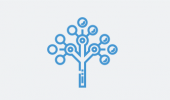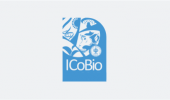Silabus S2 Biosains Hewan
- Last modified at 2 March 2021
Brief Description of Courses
BIO501 Research Methods in Biology 3(2-1)
Learn how new knowledge is created. Factual science vs. ideal science. Hal: nature and law. Cognition and knowledge. Perception and observation. Testing and proof. The procedure for writing scientific papers. Research methods. Making a research proposal.
BIO691 Colloquium for Magister Program 1 (0-1)
The master plan research seminar is conducted as a forum for discussion forums so that research can run well.
BIO692 Thesis Proposal 2(0-2)
This research proposal subject requires students to draft their research plan proposals, which are complemented by a literature review.
BIO693 Thesis Final Exam 2(0-2)
The thesis exam or final exam of the master program is the final stage of evaluation after the master's program students conduct research activities, thesis writing, and seminars. This thesis exam is intended to assess the ability of master students in supporting the material contained in the thesis and is a test of qualifications / ability to determine the degree. The scope of the thesis examination includes the thesis draft and comprehensive knowledge of students related to competence [science and method], thinking [analysis, synthesis], communication and solutions that are directly and indirectly related to the thesis. Masters students who will take their final exams must meet the academic and administrative requirements set by the Graduate School of IPB.
BSH551 Morphometrics 3(2-1)
Study morphogenetic speciation models to describe the size and shape of organisms and growth theory. Evolution of biological characteristics of body architecture and growth. Interference to get the forms of ancestors.
BSH552 Animal Systhematics 3(2-1)
Study nomenclature, description, and classification of animals. Species and infraspecific categories. High-level classifications and categories. Taxonomic procedures. Type principle. Ethics in taxonomy. International Code of Zoological Nomenclature.
BSH553 Animal Ecology 3(2-1)
Discusses the response of animals to biotic and abiotic environmental conditions related to resource exploration strategies (optimal foraging), adaptation strategies (theory of the games), behavioral change (behavioral ecology), and other strategies that enable animals to optimize their fitness and can survive on changing environment.
BSH554 Frontier in Animal Biology 2(2-0)
This subject discusses the latest studies related to animal biology research in the Animal Bioscience Study Program. Each lecturer from the Animal Biosciences Study Program will present their latest studies. Some of the studies that will be presented in this lecture cover the following topics: the history of human life, allometry, symmetry / asymmetry; biodiversity and genetic endangered animals, genetic conservation, biological evolution; bioanthropology, orangutan biology; phylogeographic, genetic variability, primate sociobiology, genetic behavior and health; insect biology, insect pollinators, insect pollination; insect ecology, insect systematics, aquatic invertebrates; DNA related to animal biodiversity and zoogeographic patterns; epigenetic regulation of stem cell differentiation, neurogenesis and memory, morphometrics; human biology, experimental and field behavior research, visual perception and taste; the behavior of honey bees and bees without stings, DNA barcoding from insects, bee products: pollen and honey.
BSH555 Animal Micro-technic 3(2-1)
This course discusses techniques for making microscopic animal preparations. Topics include methods for preparation of animal microscopic preparations, visualization techniques, use of electron microscopy and photographic equipment, as well as manual and semi-automatic quantification techniques.
BSH561 Animal Behavior 3(2-1)
Animal Behavior Lectures with an evolutionary approach analyze experimental behavior and behavioral ecology; concepts from genes to behavior; nervous-hormone system and its relation to inherited behavior and learned behavior; vertebrate sociobiology and arthropods; behavioral ecology which includes: habitat selection, territorial area, migration, adaptation in foraging, predatory behavior and adaptive behavior to face predators, mating systems and child care and conflicts that occur.
BSH562 Animal Molecular Biology 3(2-1)
This course discusses techniques for analyzing biological material from animals and their use for studying animals; code of conduct for the use of laboratory animals; physiological conditions of sample sampling; various protein and DNA analysis techniques.
BSH651 Herpetology 3(2-1)
Studying the diversity of Amphibian and Reptile groups, ranging from morphology, physiology, reproduction to molecular. The discussion was emphasized on Indonesian herpetofauna.
BSH652 Bioanthropology 3(2-1)
Study human life and its biological variations. Primate sociology. Growth, body composition and anthropometry. Adaptation and human ecology. Migration and microevolution.
BSH653 Primatology 3(2-1)
In this course, biological aspects of the Primate order are studied including anthropoid prosimians, new world monkeys, apes, and humans.
BSH654 Population Genetics 3(2-1)
In this course, genetic principles are studied that affect human populations, animals, plants, and microbes. The population in this case can be natural and artificial populations. An understanding of population genetics can be useful in the fields of biomedicine, law, biotechnology, molecular biology, cell biology, sociology and anthropology.
BSH655 Biology of Small Mammals 3(2-1)
Discusses the biology of small mammals based on their specific characteristics and their preferred distribution and habitat. As animals that are highly adaptive to various environments, their ecological characteristics, behavior and physiological adaptation patterns are thoroughly studied. The role, influence, and utilization of these animals as both experimental animals and livestock are discussed in full.
BSH656 Zoogeography 3(2-1)
Learn the theoretical and practical basis of the distribution of animals in the dimensions of space and time, patterns of distribution of animals in Indonesia's geographical area and speciation mechanisms.
BSH657 Biology of Arthropods 3(2-1)
The Arthropod Biology Lecture discusses arthropod mega-diversities that have been successful in evolution by mastering various types of habitats; Systematics, molecular and morphology of Ecdysozoa, Panartropoda (Onychopora, Tardigrada) and Arthropods (Chelicerata, Crustacea, Uniramia); Arthropod physiology: life cycle, ecdysis, hormones, communication, habitat and arthropod behavior; the role of arthropods for humans.
BSH658 Biology of Beneficial Insects 3(2-1)
This course discusses insect biology that is beneficial to humans and the environment. The lecture begins with the introduction of insect orders as a basis for understanding in the discussion of useful insects. In the following discussion the diversity and products of useful insects are discussed, such as soil-dwelling and scavenger insects, predatory and parasitoid insects, and pollinator insects. At the end of the lecture, it was discussed about insect products in the industry (apiculture and sericulture). This course is completed with practicum.
BSH659 Exploration of Habitat 3(2-1)
This course discusses habitat types, biogeography and biodiversity (diversity, description, models, and analysis). Further discussion of the sampling method, research design, data analysis and population analysis. In this lecture also discussed procedures for admission of herd admission research, permit to collect and transport specimens, and management and evaluation of habitats.
BSH65A Biology of Pollinator Insects 3(2-1)
This course begins with a discussion of insect-plant coevolution, shape, structure, flower advertisement, and nutrition of flowers. Furthermore, the lecture discusses the diversity of pollinators (including vertebrate and abiotic pollination), foraging behavior and environmental factors, pollination efficiency, flower constancy, and foraging and thermoregulation, pollination energy and data analysis. This course is completed with practicum.
BSH65B Somatometry and Somatoscopy 3(2-1)
Studying measurements of the human body including its implications for life history and primate evolution (including humans)
BSH65C Molecular Evolution 3(2-1)
The description of macromolecular evolution concerns the speed and pattern of changes that occur in genetic material (DNA sequences, etc.) and its binding products (proteins, etc.) during the time of evolution and some of the mechanisms responsible for these changes. Reconstruction of the evolutionary history of genes and organisms (phylogeny molecular), the use of DNA technology for the purposes of study of evolution and genetic diversity and genetic engineering.
BSH65D Biology of Mollusca 3(2-1)
Studying various aspects of Mollusk biology, including its origin, diversity, anatomy, morphology, physiology, and its relationship to the abiotic and biotic environment, including humans.
BSH65E Conservation of Tropical Animals 2 (2-0)
This course aims to explore the basic principles of wild animal conservation in the tropics, especially towards endemic species in Indonesia, management of wildlife communities and the complexity of sustainable wildlife conservation in Indonesia. This course integrates the concepts and principles of biological, ecological, wildlife management and human dimensions (social, cultural, economic, and political aspects). Students are trained to be able to play a professional role in identifying, collecting, preserving, testing and analyzing problems in Indonesia to formulate sustainable conservation policies.
BSH661 Methods of Animal Observation 3(2-1)
This course presents material on methods of observing behavior in nature such as scan sampling, ad libitum and focal animal sampling, animal behavior as interactions between themselves and the environment, approach to methods related to research related to stereotyped, acquired and perception behavior.
BSH662 Biology of Social Insects 3(2-1)
Social Insect Biology Lecture discusses the biology of bees, ants and termites which have very different biological characteristics compared to solitary insects. In terms of physiology, social insects have many glands in the body that produce various types of pheromones. The pheromone, among others, functions: uniting thousands of members of the colony to form superorganisms, defending the colony, and recruiting the members of the colony in search of food. The maintenance of children in social insects that form the caste system. Other specific characteristics of other social insects are the presence of polyandry and polygyny as well as the complex haplodiploid genetic system.
BSH663 Indigenous Physiology 3(2-1)
This course discusses local fauna resources and their interactions with the culture of the local community; animal ecophysiology and the importance of its use; adaptation tendencies of animal physiology, anatomy and behavior; conservation culture; the use of animals in ceremonies, health, economics and art.
BSH664 Neuroscience 3(2-1)
This course discusses the development, structure, and function of the nervous system of animals, especially insects and mammals. The main scope of the discussion is on the regulation of molecular and cellular levels, accompanied by several examples of system-level regulation and behavior, as well as the role of neuroscience in the biomedical field.
















































.png)








Login
LoginSitemap
map